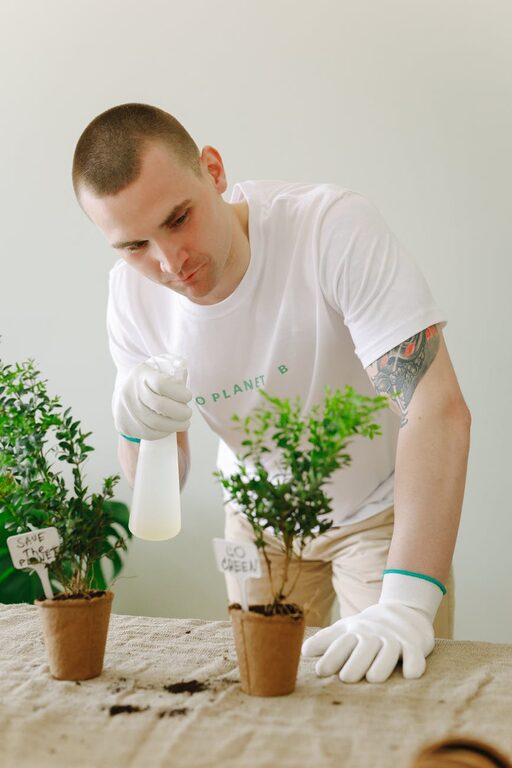Tips for Keeping Houseplants Healthy and Thriving

Keeping houseplants healthy is both rewarding and enjoyable. Not only do they brighten up your living space, but they also improve air quality and offer a pleasant connection to nature. Whether you’re a seasoned plant enthusiast or just starting your indoor garden, understanding the essentials of plant care is key to helping your green friends thrive.
In this post, we’ll explore practical tips that cover everything from lighting and watering to soil and pest management. With these guidelines, you’ll be well on your way to cultivating a flourishing indoor jungle.
Choosing the Right Plant for Your Space
Before diving into daily care, it’s important to select plants that match your environment and lifestyle.
– Assess lighting conditions: Some plants thrive in bright, direct sunlight (such as succulents or fiddle leaf figs), while others prefer low light (like snake plants or pothos).
– Consider your schedule: If you tend to be busy, opt for low-maintenance plants that require less frequent watering, such as ZZ plants or spider plants.
– Think about size and growth: Choose plants that fit comfortably in your available space and pots.
Selecting the right plant sets the foundation for healthy growth.
Understanding Light Requirements
Light is one of the most critical factors in keeping houseplants healthy.
Types of Light
– Direct light: Sunlight that shines directly on the plant, often through a window.
– Indirect light: Bright light without the sun hitting the plant directly, common near windows with sheer curtains.
– Low light: Shaded areas with minimal natural light.
Tips for Managing Light
– Place sun-loving plants near south or west-facing windows.
– Rotate plants regularly to ensure even growth and light exposure.
– Use artificial grow lights for spaces with limited natural sunlight.
Understanding your plant’s lighting needs helps prevent issues like leggy stems and dull leaves.
Watering Wisely
Water is essential, but overwatering or underwatering are common pitfalls.
How to Water Properly
– Check the soil moisture: Before watering, stick your finger about an inch into the soil. If it feels dry, it’s time to water.
– Use room temperature water: Avoid cold water that can shock plant roots.
– Water thoroughly: Ensure water reaches the roots and drains from the bottom of the pot.
– Avoid letting plants sit in standing water: Use pots with drainage holes and empty saucers regularly.
Signs of Overwatering and Underwatering
– Overwatering: yellowing leaves, mushy stems, root rot.
– Underwatering: dry, crispy leaves, wilting, slowed growth.
Consistent and attentive watering habits keep plants hydrated and healthy.
Choosing the Right Soil and Fertilizer
Healthy roots start with good soil and nutrients.
– Use potting soil formulated for indoor plants rather than garden soil, which may be too dense or contain pests.
– Consider the needs of specific plants; for example, succulents prefer sandy, well-draining mixes.
– Fertilize during the growing season (spring and summer) with a balanced, water-soluble fertilizer diluted to half strength.
– Avoid over-fertilizing, which can damage roots and leaves.
Proper soil and nutrition provide a strong foundation for vibrant growth.
Maintaining Ideal Humidity and Temperature
Houseplants generally prefer moderate humidity and stable temperatures.
– Most indoor plants thrive between 65°F and 75°F (18°C to 24°C).
– Avoid placement near drafts, heaters, or air conditioners.
– If humidity is low, especially in winter, increase moisture with:
– Pebble trays filled with water beneath pots.
– Regular misting with water.
– Using a humidifier.
Creating a comfortable environment helps prevent stress and keeps plants vibrant.
Pruning and Cleaning Your Plants
Regular maintenance encourages healthy growth and keeps plants looking their best.
– Remove dead or yellowing leaves promptly to prevent disease.
– Trim leggy or overgrown stems to promote bushier growth.
– Wipe leaves gently with a damp cloth to remove dust and improve photosynthesis.
– Repot plants every 1-2 years or when roots become crowded.
Pruning and cleaning support plant health and improve their appearance.
Watching for Pests and Diseases
Keep an eye out for common indoor plant pests like spider mites, aphids, and mealybugs.
How to Spot Problems
– Check leaves regularly for spots, discoloration, webbing, or tiny bugs.
– Look under leaves and around the soil surface.
Natural Pest Management
– Wipe leaves with a mild soapy water solution.
– Use neem oil or insecticidal soap sprays as non-toxic treatments.
– Quarantine new plants before introducing them to your collection.
Early detection and treatment prevent pests from spreading and harming your plants.
Conclusion
Keeping houseplants healthy is a delightful process of learning and observing your plants’ needs. By choosing suitable plants, providing appropriate light, watering carefully, and maintaining good soil and humidity, your indoor garden can flourish. Regular care, including pruning and pest management, ensures your plants stay vibrant and add natural beauty to your home.
Start with a few favorites, enjoy the process, and watch your green space grow! Happy planting!
